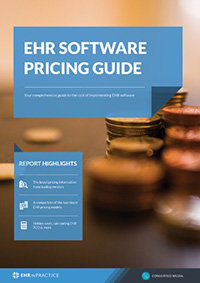What Do the Proposed Meaningful Use Stage 3 Regulations Mean for EHR Users?
The proposed Meaningful Use Stage 3 rule issued recently by Centers for Medicare and Medicaid Services (CMS) attempts to streamline standards and offer providers more flexibility concerning regulatory compliance. The proposed rule, addresses the requirements providers must meet to qualify for Medicare and Medicaid electronic health record incentive payments and avoid downward payment adjustments under Medicare for Stage 3 of the EHR Incentive Programs.
The stage three proposed rule would, according to HHS:
- Establish a single reporting period based on the calendar year
- Give physicians the option of beginning stage three in 2017 or 2018
- Simplify meaningful use objectives measures and reporting requirements by allowing flexibility with measures related to health information exchange, consumer engagement and public health reporting
- Reduce the overall number of meaningful use objectives to eight
- Remove redundant measures and those that have been widely adopted
- Align clinical quality measures reporting with other CMS programs
These proposed changes represent efforts to increase simplicity and flexibility in the meaningful use program while remaining committed to the goals of interoperability and the use of data to improve patient outcomes. CMS and ONC will accept public comments on the proposed rules until May 29, prior to making these proposals (or an amended version incorporating input from public comments) permanent.
Recommended Reading: EHR Vendor Directory - Find EHR users and their compliance information
Given the content of these proposed rules, what impact can providers expect if these proposed rules become permanent? The changes appear to affect reporting requirements and EHR compliance obligations.
- The changes require providers to submit clinical quality measure data electronically when feasible in 2017 and mandate the electronic submission of these data in 2018.
- Expect the EHR reporting period to be aligned with a full calendar year timeline with the exception of those attesting to the Medicaid meaningful use program for the first time.
- Eliminate the current 90-day reporting period for providers attesting to meaningful use for the first time.
- Require eligible providers to fulfill two of three options for ensuring patient engagement: by providing patients with access to their records; collecting patient-generated health data, offering secure messaging between patients and providers.
- Raise the threshold for several programs implemented in Stage 2. These increased thresholds involve requiring 80% of prescriptions to be sent electronically, 60% of lab and imaging orders to be sent electronically, 25% of patients viewing, downloading or transmitting data from their records; engaging 25% of patients via secure messaging and capturing 15% of patient-generated data through wearable devices or mobile applications.
From the perspective of day to day operations providers will not likely experience a significant change in operations as these will gradually be phased in and will be confined to improving existing EHR and how patient engagement infrastructures operate. However, from a broader perspective; the changes in Stage 3 represent more substantial progress toward the most sophisticated use of EHR technology.
Free white paper

EHR Vendor Directory
Get the most up-to-date directory of EHR software vendors. Find the best software for your practice.

Featured white papers
Related articles
-

How EHR and meaningful use has transformed healthcare
A look at how meaningful use has impacted EHR and healthcare
-

Meaningful Use over the next two years: what to expect
How Meaningful Use will evolve, and what you can do to prepare
-

Not up to scratch on Meaningful Use? Here’s where to start
Hospitals that are not meaningfully using EHR will be hit by payment adjustment this October



